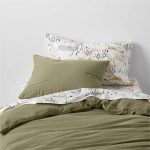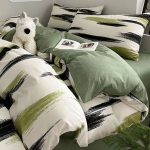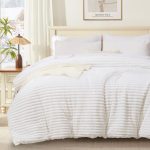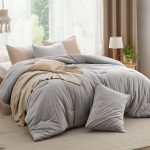In the age of digital screens and smartwatches, the humble wall clock might seem like a relic of the past. However, the modern wall clock has evolved to become more than just a functional timekeeping device. It has transformed into a stylish and versatile accessory that can add a touch of personality and elegance to any space.
The Evolution of Wall Clocks
The history of wall clocks dates back centuries, with early examples being large, ornate pieces that were primarily used in churches and public buildings. As technology advanced, wall clocks became smaller, more affordable, and more accessible to the general public. The advent of electricity in the 20th century led to the development of electric wall clocks, which were more reliable and easier to maintain than their mechanical predecessors.
Today, modern wall clocks come in a wide variety of styles, materials, and designs. From minimalist metal clocks to ornate wooden clocks, there is a wall clock to suit every taste and decor. Some modern wall clocks incorporate additional features, such as built-in thermometers, hygrometers, or even Bluetooth connectivity.
The Aesthetic Appeal of Wall Clocks
One of the main reasons why people choose to decorate their homes with wall clocks is for their aesthetic appeal. A well-chosen wall clock can serve as a focal point in a room, drawing the eye and adding visual interest. Whether you prefer a classic, traditional look or a more contemporary style, there is a wall clock out there that can enhance the overall ambiance of your space.
Wall clocks can also be used to create a specific mood or atmosphere. For example, a vintage wall clock can add a touch of nostalgia to a living room, while a modern, minimalist clock can create a sleek and sophisticated look in a bedroom. The color, shape, and materials of a wall clock can all contribute to the overall aesthetic of a room.

Complementing different interior decor styles
A well-chosen wall clock can be a stunning focal point in any room, enhancing its aesthetic appeal. Here’s how to select a clock that complements various interior design styles:
Minimalist
- Ideal Clock: Sleek, clean lines, and neutral colors.
- Examples: Metal clocks with simple dials, quartz clocks with minimalist designs.
- Ideal Clock: Natural materials like wood, soft colors, and a touch of warmth.
- Examples: Wooden wall clocks with minimalist dials, analog clocks with clean lines.
Industrial
- Ideal Clock: Raw materials, exposed gears, and a rugged aesthetic.
- Examples: Metal clocks with exposed mechanisms, vintage-inspired clocks with industrial finishes.
Bohemian
- Ideal Clock: Colorful, eclectic designs, and unique shapes.
- Examples: Vintage clocks with ornate details, handmade clocks with unique patterns.
Rustic
- Ideal Clock: Natural materials like wood and stone, earthy tones, and a vintage feel.
- Examples: Wooden wall clocks with rustic finishes, vintage clocks with distressed finishes.
Modern
- Ideal Clock: Sleek lines, bold colors, and innovative designs.
- Examples: Metal clocks with geometric shapes, digital clocks with modern aesthetics.
Traditional
- Ideal Clock: Classic designs, ornate details, and rich colors.
- Examples: Grandfather clocks, antique clocks with intricate carvings.
Coastal
- Ideal Clock: Nautical themes, light colors, and a relaxed atmosphere.
- Examples: Clocks with nautical motifs, wooden clocks with a beachy vibe.
Eclectic
- Ideal Clock: Unique, unexpected designs that add personality.
- Examples: Vintage clocks with unusual shapes, handmade clocks with one-of-a-kind designs.
Tips for Choosing a Wall Clock
- Consider the room’s size: A larger clock might be more suitable for a spacious room, while a smaller clock might be better for a smaller space.
- Think about the color palette: Choose a clock that complements the overall color scheme of the room.
- Consider the materials: The materials used in the clock should be consistent with the overall style of the room.
- Don’t be afraid to experiment: If you’re unsure about a particular style, try a few different options to see what works best.
By following these guidelines, you can find a wall clock that not only tells time but also enhances the aesthetic appeal of your home.

The Functional Benefits of Wall Clocks
In addition to their aesthetic appeal, wall clocks also offer practical benefits. They are a reliable and accurate way to tell time, and they can help to maintain a sense of order and routine. For people who work from home or have irregular schedules, a wall clock can be a valuable tool for staying on track and managing time effectively.
Some modern wall clocks also incorporate additional features that can be useful in everyday life. For example, some clocks have built-in alarms that can be used to wake up in the morning or to set reminders for appointments and deadlines. Others have built-in thermometers or hygrometers that can help to monitor indoor air quality.
Overview of well-known modern wall clock brands
The world of modern wall clocks is rich with innovation and artistry. Here’s a glimpse into some of the most well-known brands that have made a significant impact on the market:
Seiko
- Known for: Precision, reliability, and a wide range of styles.
- Key Features: Solar-powered models, kinetic technology, and minimalist designs.
Bradley Time
- Known for: Accessible designs for visually impaired individuals.
- Key Features: Tactile indicators, raised numerals, and clear hands.
Herman Miller
- Known for: Mid-century modern aesthetics and ergonomic design.
- Key Features: Sleek lines, high-quality materials, and functional features.
Joseph & Joseph
- Known for: Innovative and functional kitchenware, including clocks.
- Key Features: Unique designs, built-in timers, and kitchen-friendly materials.
Nixon
- Known for: Surf-inspired designs and a youthful aesthetic.
- Key Features: Bold colors, durable materials, and often include additional features like thermometers.
West Elm
- Known for: Contemporary home decor and affordable prices.
- Key Features: Variety of styles, from minimalist to eclectic, and often feature natural materials.
MoMA Design Store
- Known for: Curated collection of modern and contemporary design objects.
- Key Features: Unique and often limited-edition designs, collaborations with renowned designers.
George Nelson
- Known for: Iconic mid-century modern designs, including the “Ball Clock.”
- Key Features: Timeless aesthetics, unique shapes, and often feature a minimalist approach.
These are just a few examples of the many excellent brands offering modern wall clocks. When choosing a clock, consider your personal style, desired features, and the overall ambiance of your space.

Choosing the Right Wall Clock
When selecting a wall clock for your home, there are several factors to consider. First, think about the overall style of your home and the specific room where you plan to hang the clock. Consider the colors, materials, and furniture in the room to ensure that the clock complements the existing decor.
Second, think about the size of the wall clock. A large clock can be a statement piece in a spacious room, while a smaller clock may be more suitable for a smaller space. Consider the dimensions of the wall and the overall scale of the room before making a decision.
Finally, think about the features that are important to you. If you need a clock with a built-in alarm or thermometer, be sure to look for a model that offers these features. Consider your personal preferences and needs when choosing a wall clock.

How to maintain the accuracy of the clock
Before diving into maintenance, it’s crucial to identify the type of clock you’re dealing with.
General Maintenance Tips
-
Regular Checks:
- Visual Inspection: Look for dust, dirt, or damage that might affect the clock’s function.
- Time Comparison: Compare your clock to a reliable time source (like a smartphone or computer) frequently.
-
Cleaning:
- Gentle Cleaning: Use a soft cloth to remove dust and fingerprints. Avoid harsh chemicals.
- Specific Instructions: Refer to the manufacturer’s manual for any special cleaning guidelines.
-
Battery Replacement:
- Timing: Replace batteries as recommended by the manufacturer or when the clock starts to lose time.
- Proper Disposal: Dispose of old batteries responsibly according to local regulations.
Specific Maintenance for Different Clock Types
-
Mechanical Clocks:
- Wind Regularly: If it’s a wind-up clock, wind it according to the instructions.
- Avoid Extreme Temperatures: Protect from heat and cold.
- Professional Servicing: Consider professional servicing every few years to ensure optimal performance.
-
Quartz Clocks:
- Battery Quality: Use high-quality batteries.
- Avoid Magnetic Fields: Keep away from strong magnetic sources.
-
Digital Clocks:
- Time Synchronization: If your digital clock can sync with a time server, do so regularly.
- Power Supply: Ensure a stable power supply, especially for wall-mounted clocks.
Additional Tips
- Avoid Shocks: Protect your clock from bumps and drops.
- Temperature and Humidity: Maintain a stable environment to prevent fluctuations that can affect accuracy.
- Professional Help: If you’re unsure about a specific maintenance task or if your clock is experiencing persistent issues, consult a professional.
By following these guidelines, you can help ensure the accuracy and longevity of your beloved timepiece.

The modern wall clock is more than just a functional timekeeping device. It is a versatile and stylish accessory that can add personality and elegance to any space. Whether you are looking for a classic, traditional look or a more contemporary style, there is a wall clock out there that can enhance the overall ambiance of your home. So why not consider adding a wall clock to your decor and enjoy the timeless beauty and practical benefits that it offers?










